DEV LOG 4
Join us as we walk through the launch of the ZNS protocol and the release of our latest features: Posts and Token-Gated Chats

Citizens:
The end of 2023 marked a significant milestone for ZERO. On December 30th at 23:59 UTC, we launched the ZERO Name Service (ZNS) protocol as part of our ongoing mission to build a sovereign internet.
Join us as we walk through the launch of the ZNS protocol and its two derivative applications — ZERO ID and ZERO Explorer — as well as today’s release of our latest features: Posts and Token-Gated Chats.
ZNS Protocol
What is ZNS?
ZERO Name Service (ZNS) is a blockchain-based identity and routing protocol. ZNS acts as a layer above any distributed system connected to the internet, providing identities, human-readable names and organizational hierarchy for entities on and off-chain.
These names are represented as domains registered by ZNS smart contracts on the Ethereum blockchain. ZNS domains can be mapped to different types of data in distributed systems like Ethereum wallets, smart contract addresses, URLs, and more. Using the ZNS domain hierarchy, 42-character hexadecimal Ethereum accounts can be represented in decentralized systems as simple, human-readable names, like 0://john or 0://wilder.
ZNS domains are bipartite, comprising a standard ERC-721 token (NFT), and a record of that domain’s ownership in the ZNSRegistry smart contract. By separating a domain’s NFT ownership from its record, ZNS allows for safe delegation of domain management responsibilities to third parties — like other users or smart contracts — without putting that domain’s ownership at risk.
ZNS Domains
Similar to traditional domain name services, ZNS enables the creation of child subdomains under a parent domain. This is infinitely extensible. A top level domain, 0://wilder, can create a child subdomain, 0://wilder.wheels. This child subdomain can then mint children of its own (e.g., 0://wilder.wheels.genesis) and so forth, as far down the chain as any parent allows. In this example wilder is the top level domain, wheels is a second level domain, genesis is a third level domain. ZNS domains of any level can enable subdomain minting and configure registration options including; Subdomain price, an ERC-20 payment token, and payment beneficiary address, all of which can all be configured for child domains by a parent domain at any time. Domain owners of any level can also disable subdomain minting, or extend ZNS by writing their own custom smart contracts.
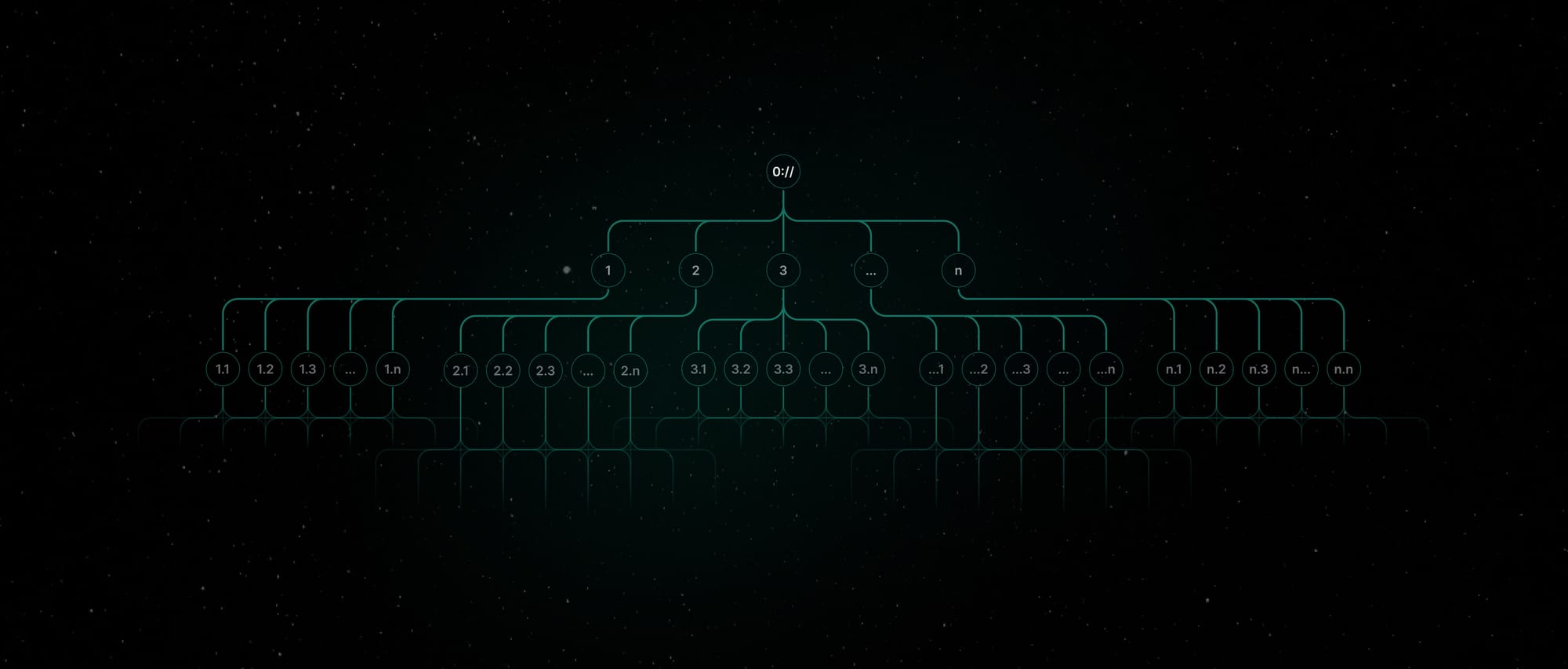
Unlike most domain name services however, ZNS domains are read top-down, left-right. This familiar hierarchy mirrors traditional file systems, such as a Windows (C:) drive. Structuring ZNS this way affords the protocol the capacity to nest infinitely — 0://universe.galaxy.planet.continent.country.state.city.neighborhood.
ZNS domain and subdomain registration are purchased with a one-time fee. There are no renewals; domain ownership is not rented to its registrant. Domain owners own that domain forever, unless they voluntarily sell, transfer, or destroy it. Such a design offers a wide range of use cases for the individuals and communities that choose ZNS.
Use Cases
All ZERO systems are designed using our five core principles:
- Sovereign
- Decentralized
- Secure
- Censorship-Resistant
- Open Source
These principles are reflected in ZNS and enable powerful use-cases:
Decentralized Identity
ZNS offers powerful naming utility to decentralized systems. With this in mind, we built ZERO ID: the native decentralized identity management system of ZERO OS and ZERO applications (ZApps). The full use case of ZNS within ZERO ID (ZID) is explained in-depth in the next section of this Dev Log.
Decentralized Communities
Every domain in ZNS can also function as a DAO. With the in-built capacity for infinite subdomain chain registrations and convenient domain management paradigm, ZNS naturally accommodates the needs of Web3 DAOs. ZNS domains can generate revenue from subdomain registrations. This enables a bootstrap mechanism for a self-perpetuating resource loop, enabling DAO initiation, operation and scale.
Decentralized Social
ZNS is also well positioned to tackle one of the biggest unsolved opportunities in Web3: decentralized social. At present, decentralized social media is a burgeoning space comprising the people, protocols, and applications seeking to unseat Big Tech’s social platforms. In traditional social media, users have no control over how their data is used, little privacy, limited security, and few (if any) options with respect to different user interfaces. What’s more, social media networks tend to be siloed; Facebook users cannot post content on Facebook that TikTok users can see on TikTok, and so on.
This level of centralization deprives social media participants of sovereignty and interoperability, and denies them compensation for the value they bring to the network. Decentralized social aims to change that. ZERO and many others including Nostr, Bluesky, Farcaster, and DeSo are looking to disrupt social media’s reliance on centralized platforms.
The ZNS protocol specifies that content within its network of domains is inherently owned and controlled by network participants, who are self-organized and autonomous. With provable identities and the potential for creator rewards and content creation incentives, ZNS offers social media an alternative to the broken attention economy of Big Tech. ZERO's first implementation of a basic, decentralized social platform is discussed more in the Posts subsection of this Dev Log.
Onchain Object Indexing
ZNS offers users the ability to discretely organize and structure data. Its top-down left-right read hierarchy is ideally suited for formalizing and organizing any set of data or objects – like those in the metaverse. Using ZNS, Wilder World ensures that every shop, apartment, item of clothing or vehicle is mapped to an easy-to-read ZID within a logical structure on the ZNS protocol. For more information on the progress of Wilder World, check out Dev Log 3.
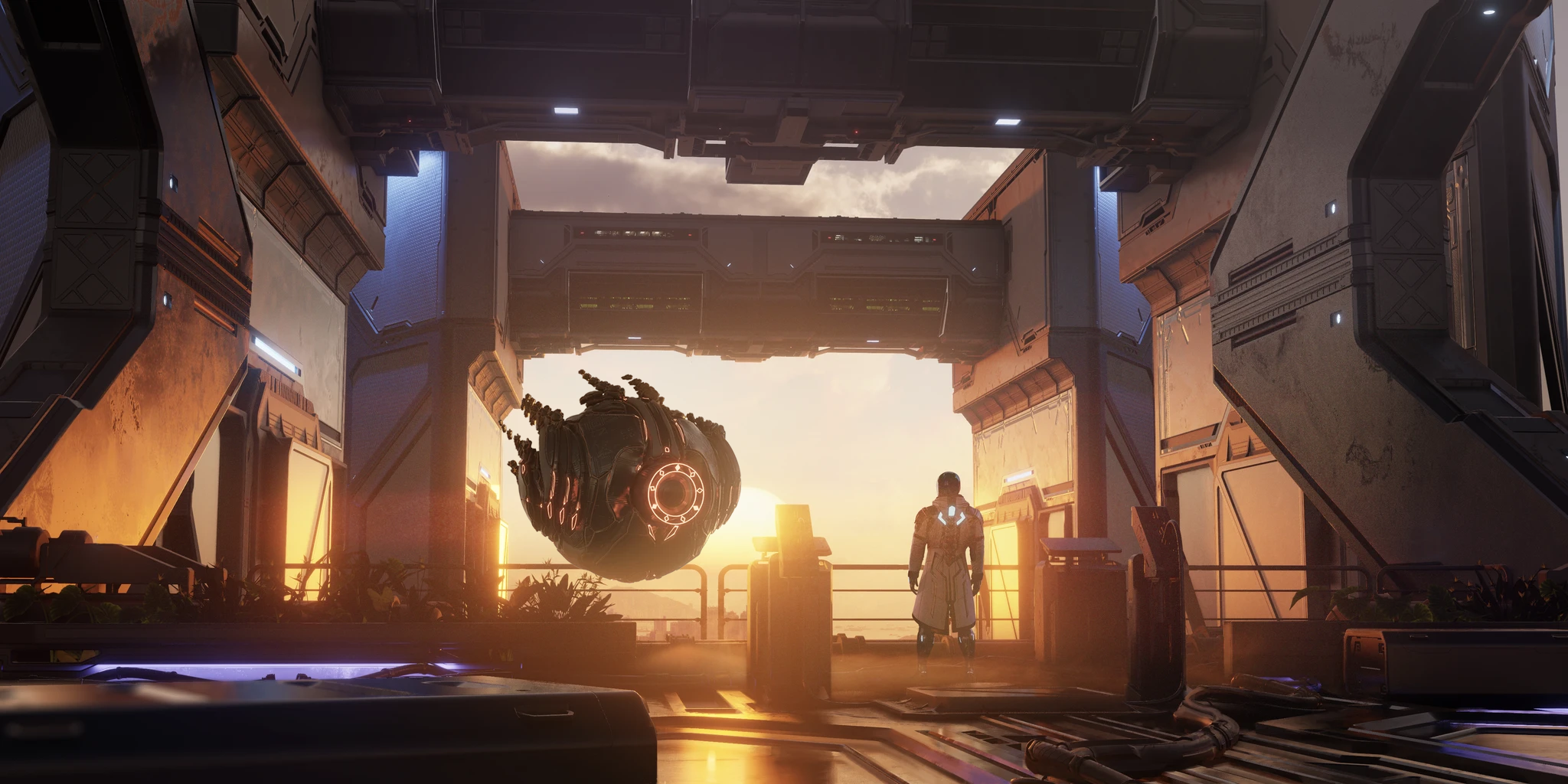
For in-depth information on ZNS, its features, capabilities, and smart contracts, check out our comprehensive ZNS documentation. To fork the project or begin building on ZNS, head to our ZNS Github page.
ZNS Features
As the touchstone of ZERO’s decentralized ecosystem offerings, ZNS is a living protocol. The ZERO Protocols team is committed to improving, upgrading, and expanding the capabilities and reach of ZNS.
Available now:
Visit explorer.zero.tech on your desktop computer to learn more.
Register root domain
Citizens can mint a top-level ZNS domain as part of ZERO’s ZERO ID offering. ZIDs are minted using MEOW — the token powering the ZERO ecosystem — with ZERO’s novel stake-to-mint flow.
Register subdomain
Citizens can mint a second-level ZNS domain via ZID with any ERC-20 token the parent domain specifies. Any domain of any level can register subdomains beneath it — or decide to close subdomain registration entirely.
Reclaim domain:
Owners of a ZNS domain can delegate ownership of their token’s record in the ZNSRegistry contract to another user or account. Owners who have done this may reclaim the domain, allowing them to re-register themselves as owners of the domain’s record.
Revoke (destroy) domain:
ZNS domain owners who possess both the domain’s NFT and its registry record can choose to revoke that domain at any time. This burns the domain’s associated NFT and makes the domain name available for anybody to mint anew.
Resolve domain to Ethereum address:
ZERO domains can be resolved to an Ethereum address, turning esoteric, 42-character hexadecimal hashes into discrete, human-readable identities.
Coming soon:
Resolve domain to string
The ZERO Protocols team is working on adding additional resolvers to the ZNS smart contracts, which will allow domain owners to map their domain to an arbitrary string. This opens up a world of possibilities, including the linking of domains to URLs or other objects both on and offchain.
ZNS SDKs
In addition to the open-source contracts and protocol information found in the ZNS Github, ZERO is working on dedicated SDKs for the ZNS protocol. This will make it easier than ever to build applications the work with ZERO protocols.
Update subdomain distribution configuration
Currently, there is no UI flow for updating subdomain registration options. In the near future we plan to release a more user-friendly way to do this using ZERO’s Explorer dApp — more on Explorer later in this Dev Log.
ZERO ID connects Citizens to unique digital identities
ZERO ID
What is ZERO ID?
ZERO ID (ZID) is the ZERO’s native implementation of ZNS. ZIDs offer Citizens two levels of membership: Worlds (top-level domains) and Domains (second-level and beyond).
Worlds are scarce by definition, making them ideal IDs for communities, projects, organizations, and other groups looking to manage membership and support community growth. Worlds are standard Ethereum NFTs (ERC-721) featuring 1 of 1 imagery from a bespoke, open-source generative model trained in partnership with Prem AI.

Domains are any level of ZERO ID below a World. 0://wilder is a World, while0://wilder.n3o is a Domain, as is 0://wilder.n3o.blog. Any Domain has the ability to enable (or disable) child Domain minting, allowing for the formation of communities beneath them. This mirrors the structure of DAOs and sub-DAOs in Web3, wherein members of a larger community congregate in smaller groups around a common goal.
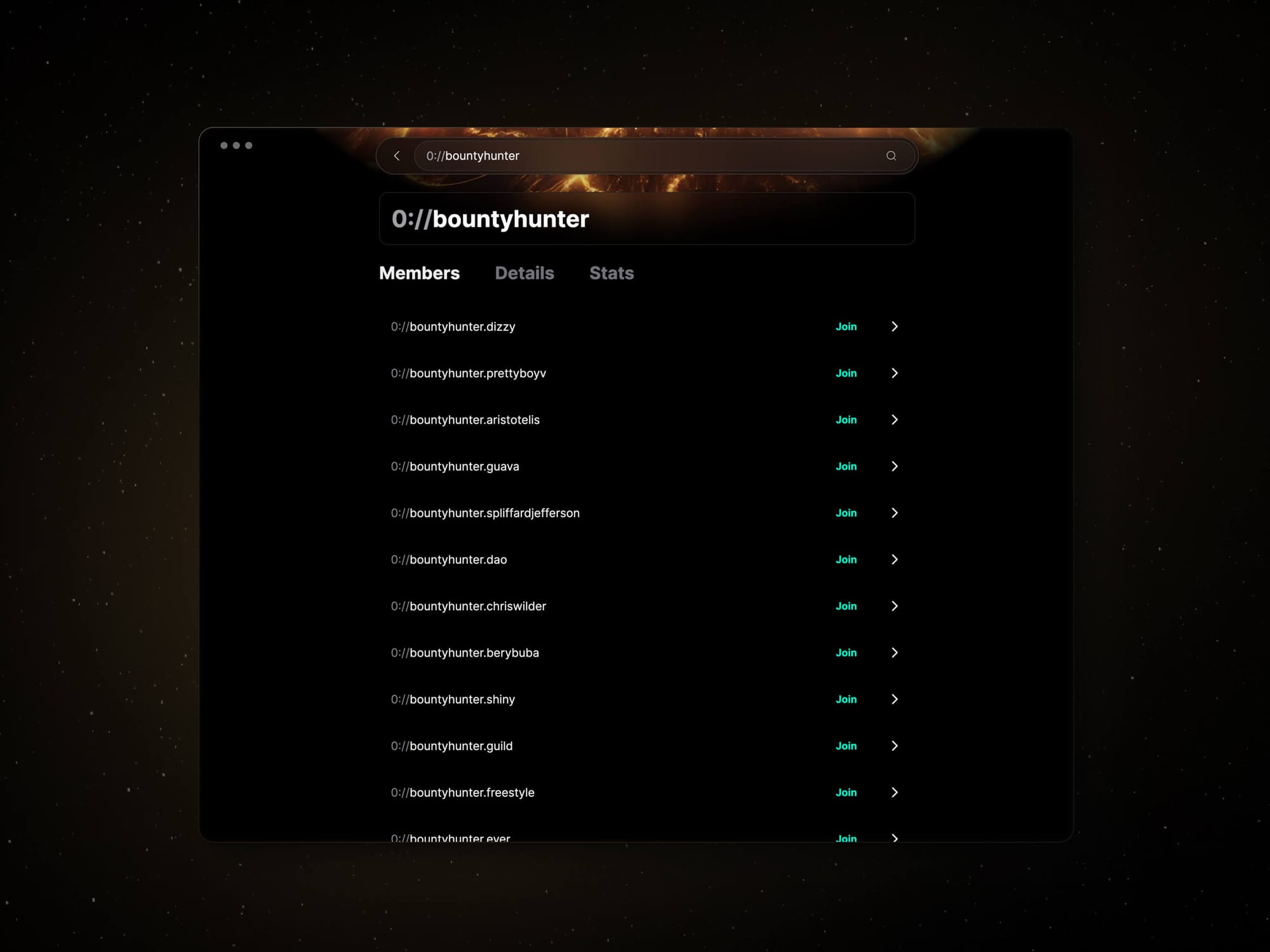
ZID is the de facto identity management solution within ZERO applications and within partner projects like Wilder World. As an open-source application atop the open-source ZNS protocol, ZID is uniquely suited for adoption by other major Web3 players. By making it easy to utilize, route to, fork, or otherwise accommodate ZERO IDs, we grow closer to our goal of a unified, decentralized identity management system.
Whether a Citizen owns a World or a Domain, their ZERO ID affords them the same benefits of an all-access passport to ZERO applications. With ZID, Citizens should feel empowered to create, build, congregate, democratize, and denominate Web3 on their own terms; no upstream, administrative powers-that-be. What does this look like in practice?
ZERO ID Functionality
Unified dApp Identity
In ZERO and partner ecosystems, ZERO ID is a single, discrete identity allowing any Citizen to prove their legitimacy — i.e., that they are who they say they are — without needing verification by a centralized authority. With ZID, anyone can verify that John Smith is 0://john and not an impostor by proving that ownership of the 0://john World is associated with the entity claiming to be John Smith. John Smith can also use his 0://john World as his identity for every platform supporting ZERO, making ZID a viable, decentralized alternative to SSO.
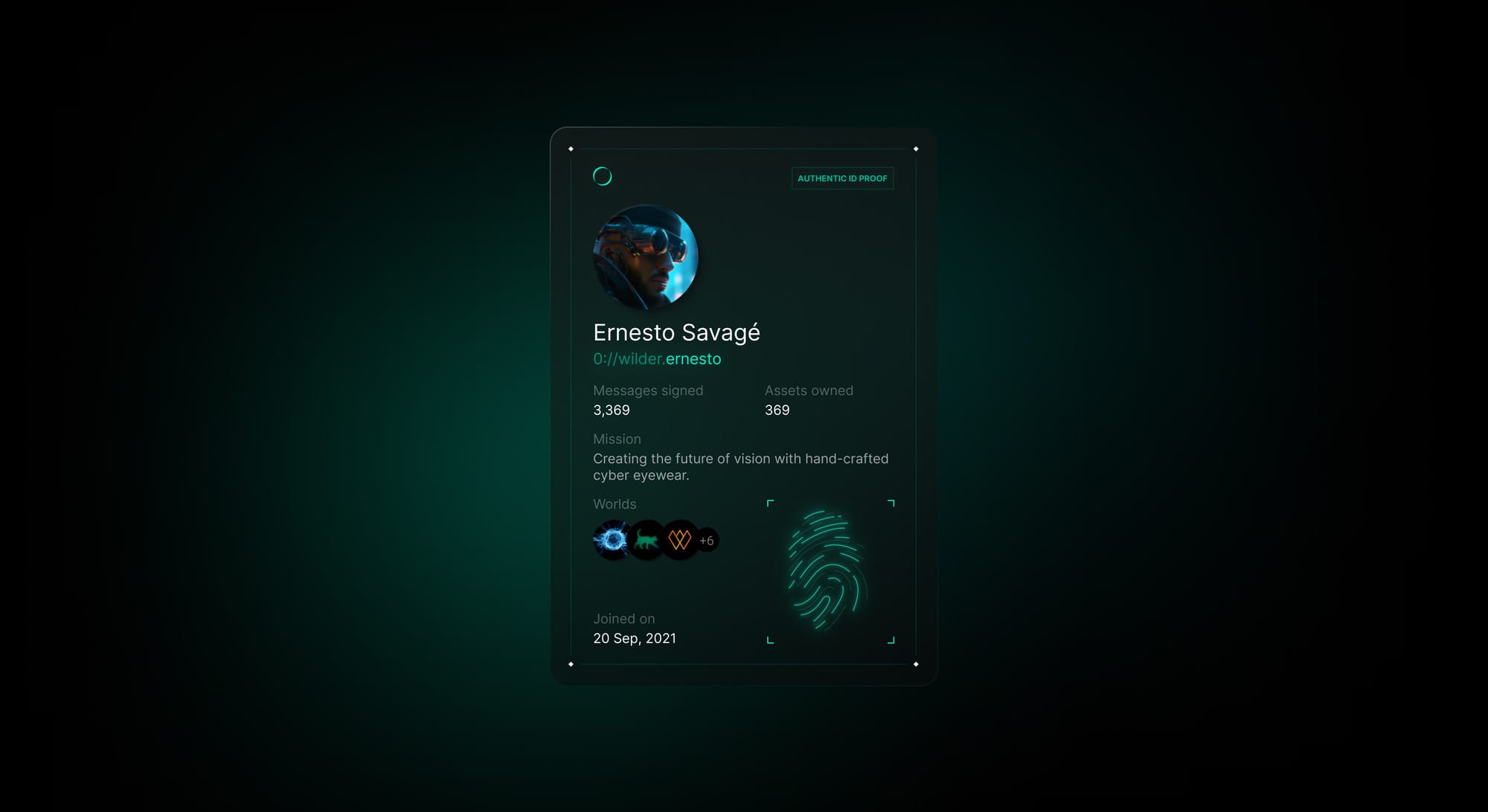
Token-Gating
ZIDs of all levels, Worlds and Domains, are the basic components of our ZERO Messenger-based feature, Token-Gated Chats. The ability to gate conversations behind token ownership has emerged in Web3 as a key requirement for DAO management; we'll chat more about Messenger and Token-Gated Chats later in this Dev Log.
DAO Management
Every ZERO ID enables crucial DAO management functions at the ZNS contract level, including delegating domain management to DAO operators and the ability to set the Domain payment beneficiary as a DAO treasury contract. As ZERO continues building in 2024, DAO management functions in ZID will be a key focus.
Resolve to Ethereum Address
ZERO IDs allow mapping of an Ethereum account to a World or Domain. This account can be a wallet, a smart contract address, token id, etc. As randomized 42-character hexadecimal hashes are not particularly easy to read or memorize, ZIDs introduce a much-needed level of human-readability and user friendliness to the Web3 accounts that otherwise define Citizens.
ZBI and MEOWDROP
Ownership and use of a ZID in the ZERO ecosystem will be a key component in determining forthcoming Citizen allocations of ZERO Basic Income (ZBI) and the MEOWDROP (you can register for the MEOWDROP here). We will share more details on each of these — and the larger MEOW ecosystem — in future ZERO Dev Logs.
ZERO ID will play an important role in rewarding Citizens with MEOW token
Explorer
Explorer is the second native ZERO dApp built on top of our ZNS protocol.
What is Explorer?
Explorer is a UI layer atop the ZNS protocol enabling Citizens to mint, configure, and interact with ZERO ID domains. Citizen’s can follow Explorer’s mint flow to register an available World or Domain, and browse the dashboard to view key insights about existing Worlds and Domains. In this sense, Explorer can be considered a visual means of interacting with ZID domains and the digital real estate they occupy on the blockchain.
Traverse the ZNS tree mint and join worlds in ZERO Explorer
ZERO ID in Explorer
Explorer offers Citizens a simple means of interacting with complex smart contracts, navigating Worlds and Domains, and tracking real-time ZID metrics. On December 30th, the dashboard updated live as 500 Worlds and 300 Domains were minted in the first 24 hours of ZERO ID’s launch. The dashboard also details other important metrics:
Total Staked - Almost $300,000 USD worth of $MEOW that has been staked as payment by Citizens minting Worlds. This will rise and fall based on the USD value of MEOW and as Worlds are minted or destroyed.
Total burned - Each time a ZID is minted, a small protocol fee is taken and burned. This contributes to the deflationary nature of the MEOW token. Currently, more than $10,000 USD has been burned.

World Memberships - The Explorer homepage also shows the most popular Worlds by child Domains registered underneath. As of writing, 0://free, 0://bountyhunter, and 0://anime round out the top 3, with 55, 36, and 25 child Domains, respectively.
Navigating beyond the Explorer homepage offers detail for individual Worlds and Domains. Every ZID has a dedicated page displaying the domain’s token image and metadata like owner address, token ID, date minted, Domain distribution settings, and more. Explorer also links to any child Domains registered under that World or Domain, allowing Citizens to browse the infinite chain of parent-child Domains made possible by ZNS.
Inspect Worlds, Domains and metadata in the Explorer
As ZERO continues to builds out ZID's capstone implementation of ZNS, Explorer will expand in function and capability alongside them. Explorer is the de facto interface of the decentralized ZERO ecosystem — including our first steps toward decentralized social: Posts.
Posts
Posts are simple, text-based messages displayed on a World domain’s Explorer page. By connecting their Web3 wallet in Explorer, the owners of that World or any child Domains underneath it can add Posts to that World’s page. Meanwhile, anyone who connects a wallet to Explorer can upvote or downvote a Post on a World’s page, and anyone in Explorer — irrespective of having a Web3 wallet or a ZID — can see any Post.
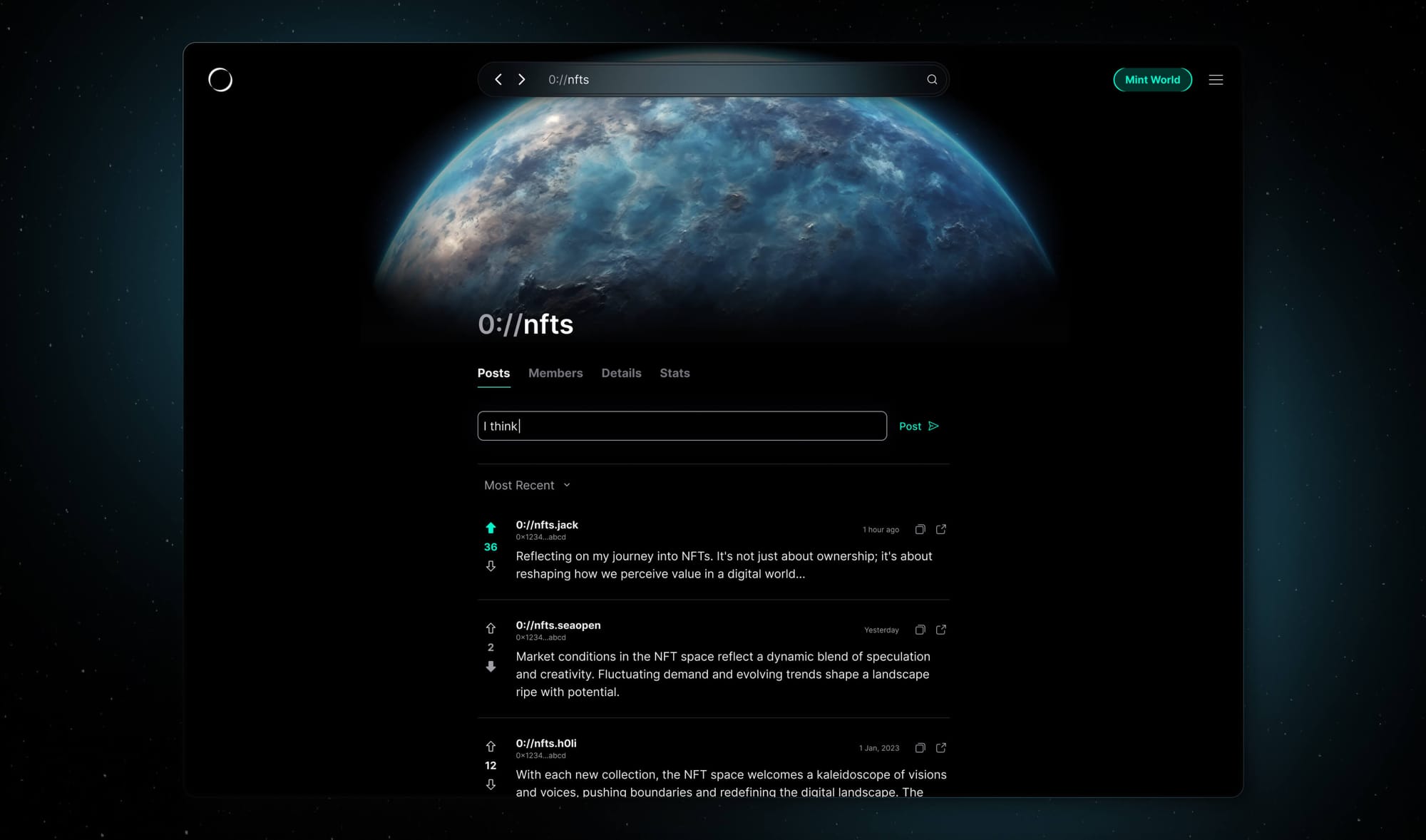
Posts are hosted on Arweave, a permanent, decentralized data storage network trusted by many other prominent Web3 dApps. Storage of Posts on Arweave ensures that every Post and its author are verifiably unique. Posts and Post authorship can never be spoofed, tampered with, or otherwise censored — a key fundament of Web3 and one of ZERO’s core principles.
Posts represent ZERO's first foray into the decentralized social landscape. With provable authorship, censorship resistance, token-gated participation, and public viewership, Posts offer communities and individuals an alternative platform in which to organize, socialize, and galvanize.
The mainnet, public Posts release is today, February 15th. This launch arrives in tandem with another key Web3 community feature from ZERO: token-gated chats. Before we get into the particulars of that Web3 community standard, let’s take a look at the application in which it lives: ZERO Messenger.
ZERO Messenger
What Is ZERO Messenger?
ZERO Messenger is an end-to-end encrypted, direct messaging application built by ZERO. Current members of zer0.io will recognize Messenger as a decentralized successor to the platform. Messenger is currently in Beta, restricting access to Citizens with an invite code, or those with existing zer0.io logins, who will be able to use their old login to access the Beta.
Users of ZERO Messenger own their own data and will never be subjected to advertisements, surveillance, censorship, or other predatory behaviors. As with all of ZERO’s protocols and applications, Messenger is open-source. Anyone can clone, fork, or contribute to Messenger via ZERO’s Github. Messenger offers Citizens a Web3-native messaging experience, including Ethereum wallet user sign-up / login and platform-wide ZERO ID integration. Adding to this, Messenger’s latest Web3-native feature, Token-Gated Chats, releases today.
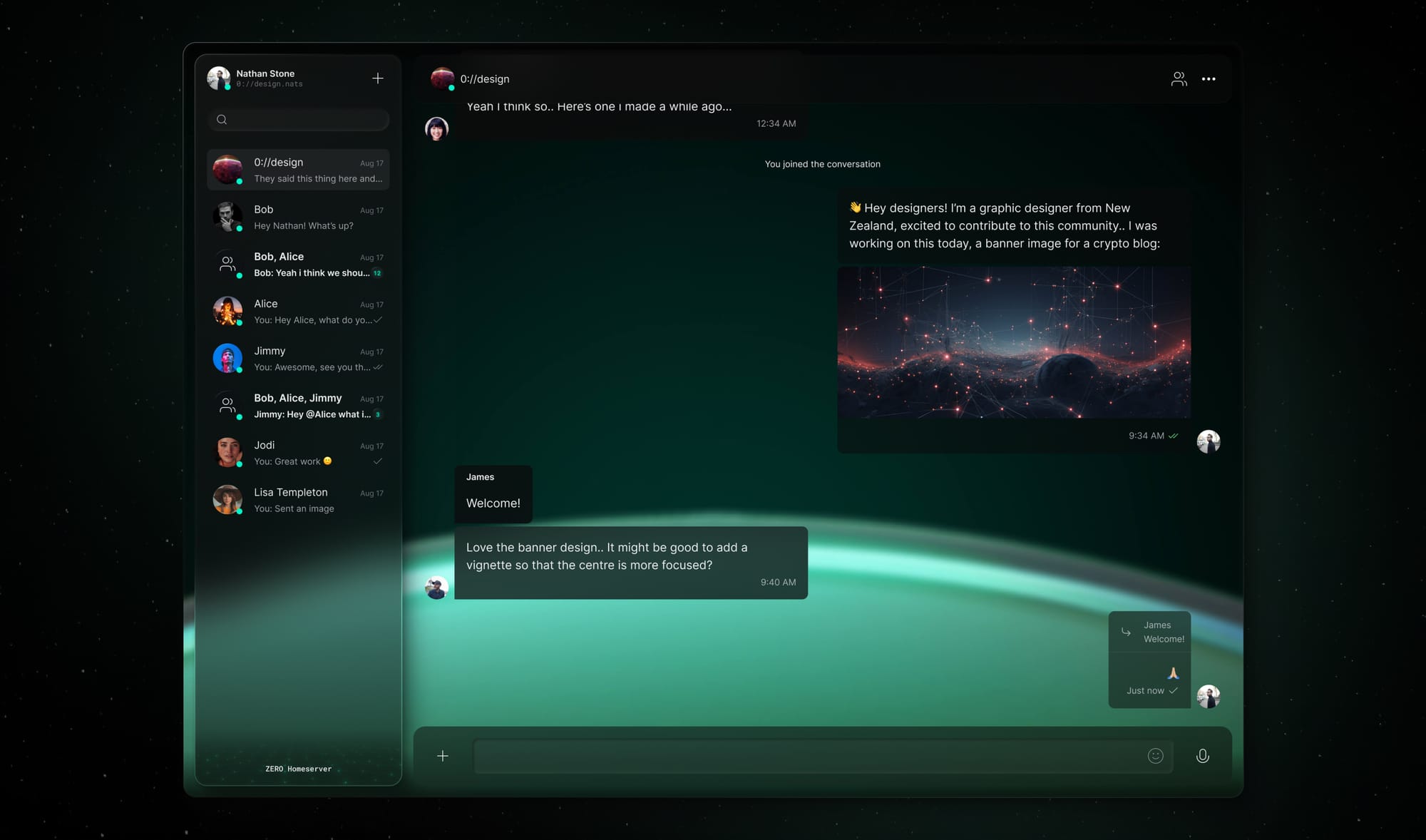
Token-Gated Chats
Broadly speaking, Token-Gated Chats are group conversations between individuals holding a Web3 token or tokens that are part of the same collection or protocol. Anyone without a token is unable to see or participate in that specific token-gated chat, while those with the required token can participate. 2021’s NFT boom saw the emergence of token-gated conversations as a key requirement for Web3 communities; ZERO Messenger offers this experience for holders of ZERO ID Worlds and Domains.
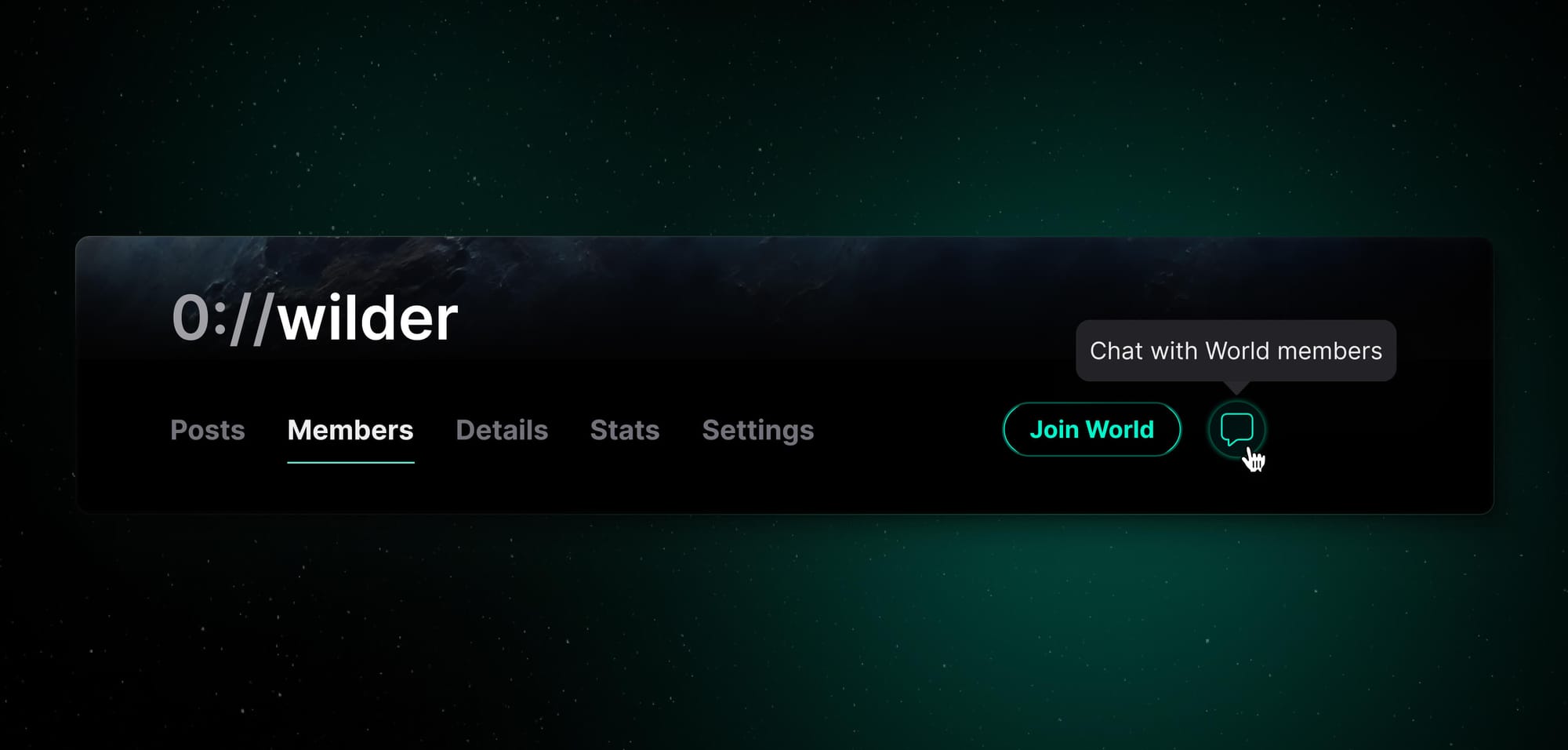
With Messenger, ZID World and Domain owners can create corresponding token-gated chats for their domains by clicking on the link in a domain’s Explorer page. Messenger then creates the domain’s conversation and gates access to that conversation based on the domain’s information in ZNS smart contracts. Owners of a World and the child Domains under it can join that World’s token-gated chat while those who do not have a ZID domain meeting that criteria will be denied access, unless they purchase an eligible domain. Members of a World who sell, destroy, or otherwise transfer away the World or Domain granting them access to a specific token-gated chat will automatically be removed from that conversation.
In this way, ZERO’s token-gated chats empower Web3 communities to self-organize into secure communication channels without reliance on a centralized administrator. What’s more, membership in ZERO’s token-gated chats is opt-in. Citizens will not be added to eligible token-gated chats without their consent, and are able join, leave, and re-join an eligible conversation at any point.
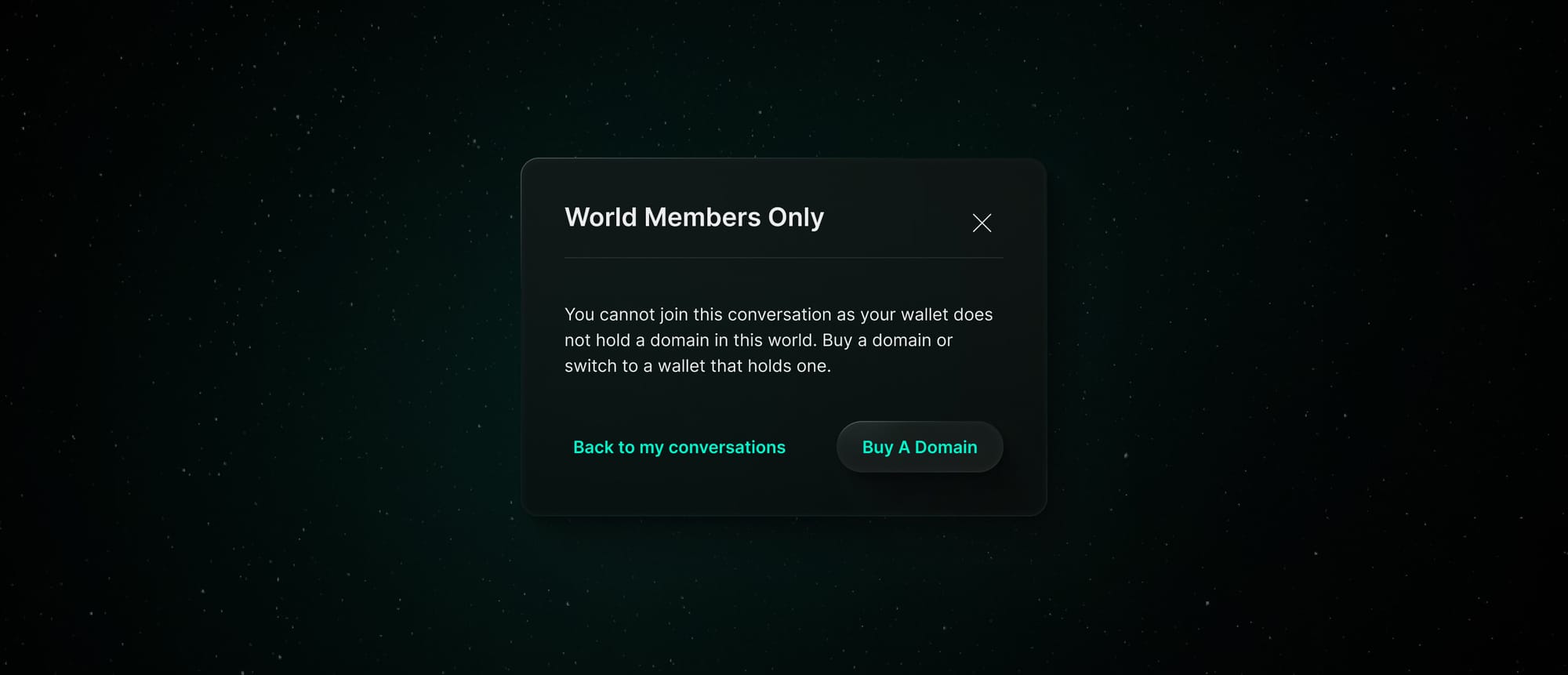
Looking Forward, Community First
Both Token-Gated Chats and its twin feature, Posts, are built by ZERO to empower decentralized communities. The basis of Web3 is the coalescing of individuals into like-minded communities that are self-organized and free from centralized administration; ZERO is committed to building products that afford Citizens and their communities the ability to organize, energize, democratize, and own a corner of the internet. There is much more to come here — this is just the start.
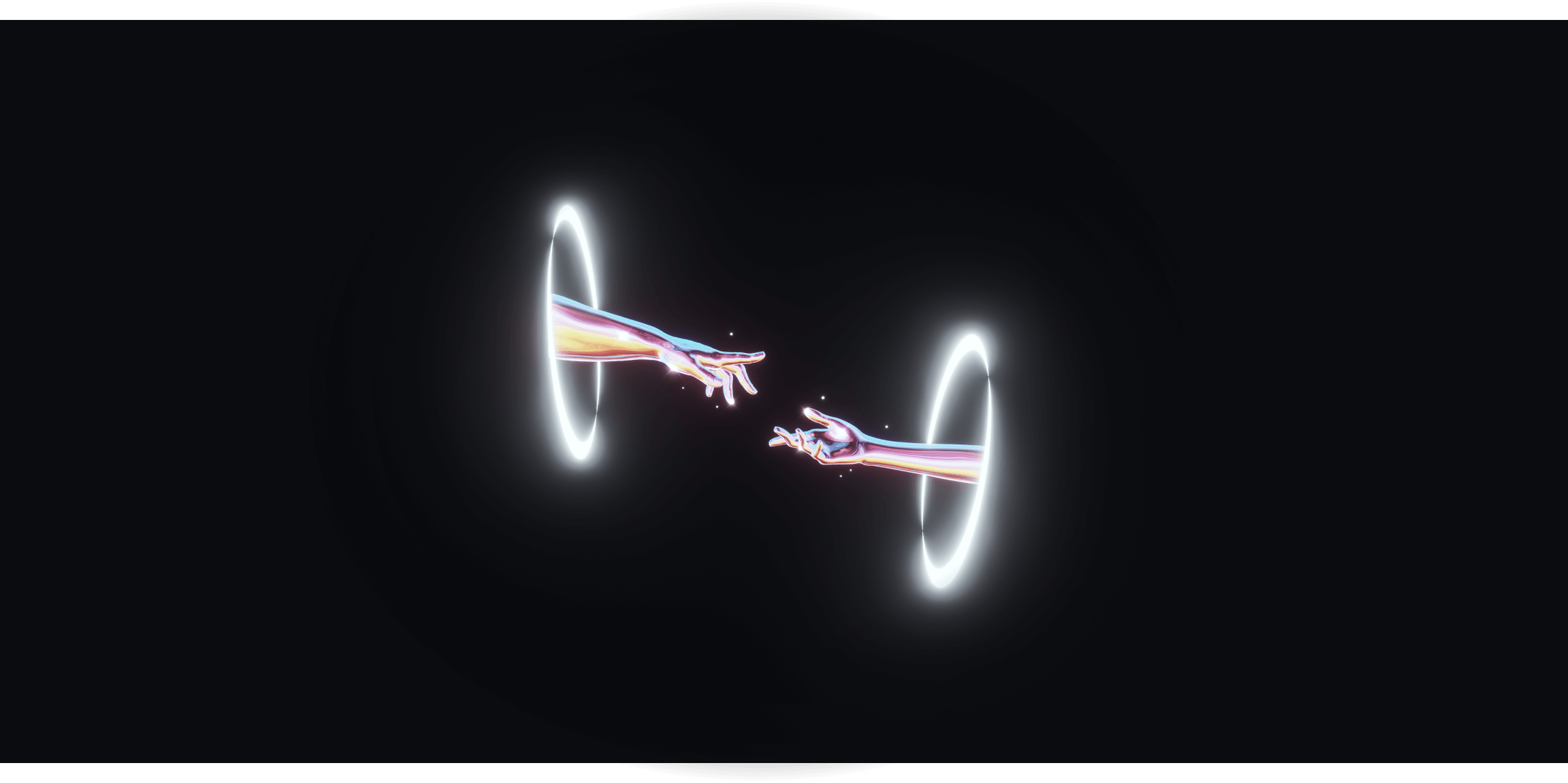
In Closing
2024 will be a seminal year for Web3, ZERO, and you, our Citizens. As we work to build, ship, iterate, and blaze new trails, Citizens can expect monthly Dev Logs capturing ZERO’s progress across all our teams and platforms. We are thrilled to have introduced ZNS, ZERO ID, Explorer, and Messenger in this Dev Log, and we can’t wait to show you what’s on deck for the coming months. As both ZERO and MEOW continue to grow in depth and breadth, we will push to reward our early adopters, and strive for true north in everything we do: Sovereignty, Decentralization, Security, Censorship-Resistance, and Open-Source.
Thank you for reading. See you next month.
— The ZERO Team
Stay up to date with the latest from ZERO:
Website
Explorer
Telegram
X
